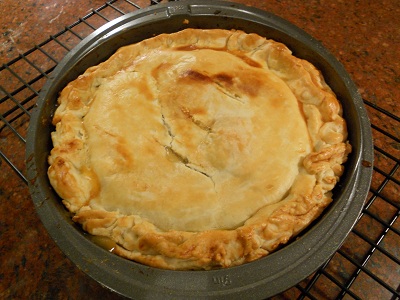I’m tempted to start a new category on the blog: what to do with your leftover x that you bought for Passover and is still in your fridge a month and a half later. This year it was the fresh horseradish that my family always uses. Think E.T. but with a mop of curly green hair. It gets grated into the jarred stuff that is served alongside a few pieces of gefilte fish at a Saturday morning kiddush.

The thing about the horseradish is that I can’t stand it. That entire category of foods doesn’t agree with me (Why would you ruin sushi with wasabi? And you do realize they make poison from mustard?) I debated just tossing the offending root in the trash, but that seemed like a waste. So I went to my cookbooks.
Luckily, it only took five minutes of searching until I was reading a pickled beets recipe that calls for fresh horseradish. It’s from Deborah Madison’s terrific cookbook, America: The Vegetarian Table, a book which has served me well in the past, but which I hadn’t opened in years.
The recipe calls for two tablespoons of coarsely grated fresh horseradish, which I toned down to about a teaspoon and a half. And honestly, the recipe really did benefit from the root. It gave it a little heat and was a great counter balance to the warm spices: brown sugar, fresh nutmeg, fresh ginger and whole cloves.
Madison points out that tiny garden beets, about the size of “large marbles,” are prettiest in this recipe. I used what was in my fridge, which were large ones. I simply peeled them, cut them into smaller pieces and steamed them before the pickling.

I’ve served these alongside whatever we’re having for dinner: quinoa with arugula stirred into it; arugula sautéed with tons of garlic, strips of fresh red pepper and finished with golden raisins; roasted carrots topped with fresh dill; chunks of fresh avocado; eggs, boiled hard but with jammy yolks. Or, just grab a fork and the jar and have yourself an afternoon snack.
Pickled Beets from Deborah Madison’s America: The Vegetarian Table
Ingredients
About 3 cups of beets (20 small beets)
1 ½ cups apple cider vinegar
1 cup water
1/2 cup white or brown sugar
1 teaspoon salt
1 scant teaspoon freshly grated nutmeg
1 ounce fresh ginger, peeled and sliced into strips
Up to 2 Tablespoons coarsely grated fresh horseradish
7 whole cloves
Directions
Trim the beets, leaving on ½ inch of their stems, and scrub them well. Or, peel and cut larger beets into 2-inch pieces. Steam them until tender but still a little firm, about 15 minutes. Let the beets cool. If the skins are tender looking and free of roots or coarse patches, leave them unpeeled; otherwise, peel them. Fit them into a clean quart jar.
Combine the remaining ingredients in a nonreactive saucepan and bring them to a boil, stirring to dissolve the sugar. Pour the hot vinegar mixture over the beets, immersing them fully, Cover tightly and store in the refrigerator. They are best served after sitting for at least a day and will keep for one to two months.





